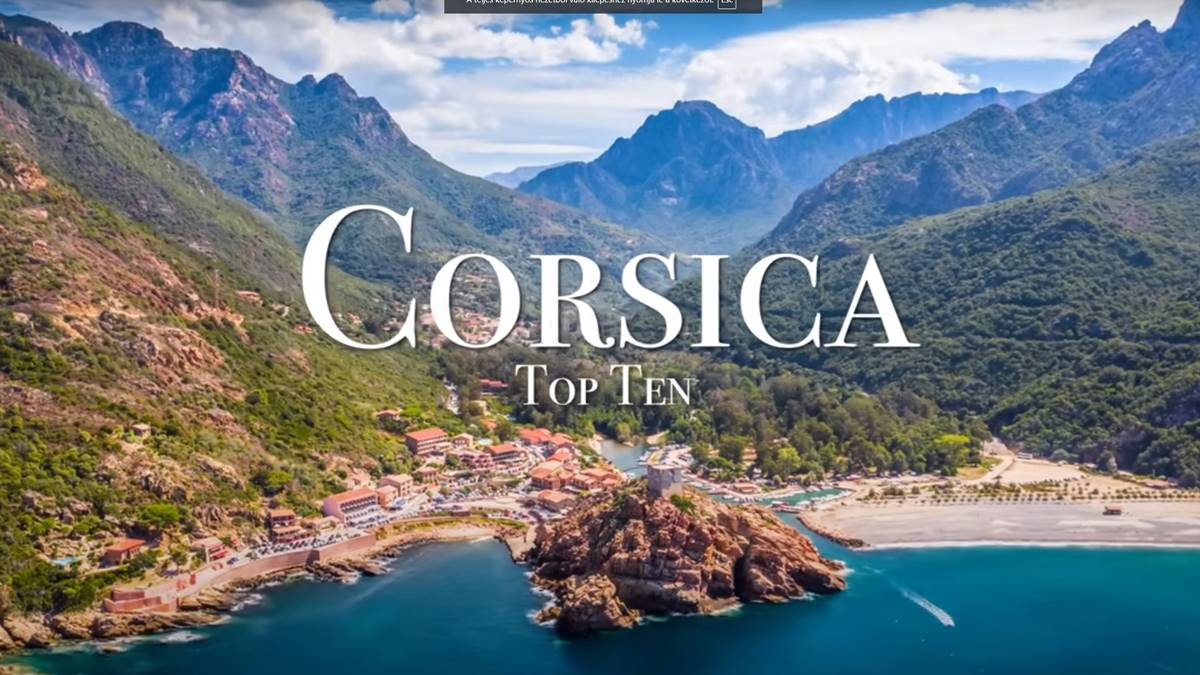Crystal-clear waters, jagged mountain peaks, charming coastal towns, and a unique blend of French and Italian culture — Corsica is an island that captivates the senses and enchants every traveler who visits. Known as L’Île de Beauté, or the “Island of Beauty,” Corsica is more than just a Mediterranean getaway — it’s a paradise of natural wonders, rich history, and unspoiled charm.
According to bellamagazin.hu, Corsica offers an ideal mix of adventure, relaxation, and cultural exploration. Whether you’re hiking along coastal cliffs or sipping wine in a quaint village square, there’s always a new corner of beauty to uncover.
Ajaccio – The Birthplace of Napoleon
Begin your Corsican adventure in Ajaccio, the island’s capital and the birthplace of Napoleon Bonaparte. The city radiates a laid-back Mediterranean charm, with its palm-lined promenades, colorful markets, and lively cafés. Visitors can explore the Maison Bonaparte, the family home of Napoleon, which is now a museum dedicated to his legacy.
The old town of Ajaccio invites slow wandering with its narrow alleys and pastel facades, while the nearby beaches offer golden sand and gentle waves — ideal for relaxing before heading deeper into the island.
Bonifacio – Clifftop Magic and Coastal Drama
Perched dramatically on white limestone cliffs, Bonifacio is one of Corsica’s most iconic and photogenic towns. The medieval citadel appears to defy gravity, rising above the turquoise sea below. Walking along the fortified walls and narrow streets is like stepping back in time.
A boat trip around the cliffs reveals sea caves and hidden coves, and the view of Bonifacio from the water is unforgettable. Don’t miss the Escalier du Roi d’Aragon — a legendary staircase carved into the cliff face, descending dizzyingly down to the sea.
Calvi – Beaches, Citadel, and Legend
To the northwest lies Calvi, a lively resort town famous for its crescent-shaped bay and long sandy beaches. Overlooking the town is a majestic 15th-century citadel, where legend claims Christopher Columbus was born. Whether or not the story is true, the panoramic views from the citadel’s ramparts are undeniably real — and breathtaking.
Calvi is also a gateway to adventure: it’s a prime spot for water sports, sailing, and diving, as well as for exploring the Balagne region, known as the “Garden of Corsica” for its olive groves, vineyards, and hilltop villages.
Corte – Heart of the Mountains
In the center of the island lies Corte, a town steeped in Corsican nationalism and rugged mountain spirit. It once served as the capital of an independent Corsican republic and still embodies the island’s unique identity. The town is dominated by a citadel atop a rocky peak, and houses the Musée de la Corse, where you can learn about Corsican culture, language, and resistance history.
Corte is also the base for hiking adventures in the Restonica Valley, home to alpine lakes, granite cliffs, and crystal-clear rivers — a paradise for nature lovers and seasoned hikers.
Porto and the Calanques de Piana – Nature at Its Most Dramatic
On Corsica’s western coast, the small port town of Porto is the ideal launch point for discovering one of the island’s UNESCO World Heritage treasures: the Calanques de Piana. These dramatic red-rock formations, sculpted by wind and sea, rise like giant sculptures above the coastline. Driving the twisting mountain road through the calanques at sunset is one of Corsica’s most magical experiences.
Nearby, you can also explore the Scandola Nature Reserve — accessible only by boat — where volcanic rock formations, deep fjords, and rare wildlife await.
Cap Corse – The Wild Peninsula
For a more off-the-beaten-path experience, head to Cap Corse, the wild and scenic northern peninsula of the island. Winding coastal roads lead through sleepy fishing villages, ancient towers, and vineyards perched above the sea. This is Corsica in its most untouched form — raw, remote, and incredibly photogenic.
Corsican Cuisine – A Taste of the Island
No journey through Corsica is complete without savoring its unique gastronomy, a delicious fusion of French finesse and rustic Mediterranean flavors. Highlights include:
-
Charcuterie: especially figatellu (smoked liver sausage) and prisuttu (Corsican ham)
-
Cheeses: like brocciu, a soft cheese made from ewe’s milk
-
Chestnuts: used in flour, cakes, and even beer
-
Seafood: including fresh mussels, octopus, and anchovies
-
Local wines: from vineyards that date back to Roman times
Dining in Corsica isn’t just a meal — it’s a cultural experience that reflects the island’s soul.
A Culture All Its Own
Corsica may be part of France, but it has a strong sense of local identity. The Corsican language, traditional music, and proud independence are felt throughout the island. From village festivals to polyphonic singing, the island’s heritage is alive and deeply rooted in everyday life.
Why Corsica Should Be on Your Travel List
Corsica is more than a summer destination — it’s a year-round escape filled with contrasts: mountains and sea, French refinement and Italian warmth, adventure and tranquility. Whether you’re drawn by hiking trails, ancient villages, or simply the call of untouched nature, Corsica offers an experience that is as unforgettable as it is authentic.
Source: bellamagazin.hu – Korsika látnivalók: fedezd fel a szépség szigetét!
